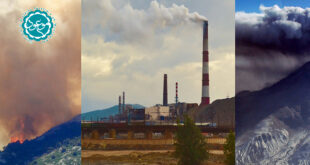According to Mouood, quoting by Guardian:
Doubts over Coalition’s net zero target as report finds soil carbon emissions may increase as climate warms
Exclusive: Rising temperatures and shifting rainfall patterns expected to increase losses and make it more difficult to identify net carbon emissions
Fresh doubts have emerged over whether Australia can rely on boosting soil carbon to achieve its net zero emissions goals with a new New South Wales government report predicting the land sector will become a significant source of emissions in a warmer climate.
The concerns are raised in a report on soil health trends in NSW forests, published recently without fanfare by the state’s Natural Resources Commission. It examined soil organic carbon (SOC) levels in eastern NSW forests and how they may be affected by projected rising temperatures and shifting rainfall patterns.
They found major losses could be expected, particularly for southern forests, suggesting “forest managers will have to implement appropriate soil carbon-enhancing strategies even to just maintain current SOC levels”.
“This also has implications for identifying ongoing net carbon emissions from NSW lands, with respect to aiming for Net Zero Emissions and mitigating climate change,” it said.
In a separate government report detailing the modelling – known as NARCliM – used, scientists found the problem of soils releasing more carbon as conditions became warmer and drier would be statewide and would accelerate with further heating.
“From the average of the 12 models, in the upper depth interval (0 to 30cm of soil), there is a statewide average 2.5 tonnes of carbon per hectare decrease to the near-future change period [to 2040] and 5.1tC/ha to the far-future change period,” the second report said. The models ranged from as much as 1.6tC/ha additional carbon taken up on average to losses of as much as 12tC/ha. Scientists have long known the carbon content in soil can vary considerably based on temperatures, moisture content and soil type, among other factors. For instance, rising temperatures tend to boost microbial activity that results in more of the carbon humus in the soil digested, and extra carbon dioxide emitted.
As the Australian Academy of Technology and Engineering noted in a recent explainer, more carbon is stored in soil than in the atmosphere and all plant life combined so what happens to that carbon can make a big difference. However, measuring carbon isn’t cheap, costing about $30 a hectare a year.
Even so, governments including Australia’s commonwealth and some states are increasingly looking to soil to do much of the work to meet their emissions reduction targets.
The Morrison government’s recently released 2050 net zero plan, relies on as much as 17m tonnes of CO2 a year be sequestered in soil carbon projects for carbon neutrality to be achieved.
“Until we have better scientific evidence, we need to be cautious about relying on soil carbon to be our saviour in our net zero plans,” said Beverley Henry, an adjunct associate professor at Queensland University of Technology.
One priority should be making it cheaper to measure what carbon is contained in the soil, how it fluctuates with weather conditions, and how it can be expected to change in the future. Also, a better understanding of how human intervention can make a difference is needed since farmers can expect millions of dollars in payments for trapping more carbon.
“We need to get better, less costly soil measuring techniques,” Henry said, adding many more surveys are needed to shore-up results generated in laboratories.
“If you have more droughts, it is more difficult to consistently increase soil carbon,” she said. “The increased variability of the climate makes it harder to build soil carbon but more importantly to keep it there.”
Australia’s climate is tending to dry out, particularly in the south, CSIRO and the Bureau of Meteorology have found. Rain-bearing storm tracks are shifting southwards, with more of the moisture missing the continent.
The NSW government reports echo findings by scientists such as former CSIRO researcher Jeff Baldock. He identified a decade ago a positive feedback loop may exist if warming temperatures led to more carbon being released, in turn triggering more warming.
Baldock said rainfall is typically the “principal dictator” of how much carbon is in the soil. Modelling, such as that cited by the Natural Resources Commission, would particularly be driven by rainfall predictions. In Australia, climate science still has only broad-based projections of future shifts.
Farmers had an interest in improving the carbon content of their soils as it typically improves productivity, he said. Planting legumes, for instance, can bolster carbon levels but landholders would have to consider the trade-offs.
“Can farming businesses still be viable when the system is trying to put carbon into the ground?” Baldock said.
Guardian Australia approached Angus Taylor, the federal emissions reduction minister, and Matt Kean, the NSW treasurer and environment minister, for comment.
Chris Bowen, Labor’s federal climate spokesman, said “transparency and accountability are not things generally associated with the Morri
son government”.
A Labor government would “commission a short and sharp review” of the Australian Carbon Credit Unit framework, including how they applied to farms, he said.
His NSW Labor counterpart Jihad Dib said the Natural Resources Commission report underscored the need to “listen to the science” if the land sector is to play an important role in lowering emissions.
“The only way to guarantee emissions reduction is to legislate the emissions reduction and have a clear and transparent plan to deliver it,” Dib said.
Labor’s net zero emissions bill would create a Net Zero Commission to develop and monitor emissions cuts in NSW. “This bill has passed the upper house, the NSW government should support it in the parliament in the new year,” he said.
 Mouood Mouood English Edition
Mouood Mouood English Edition




